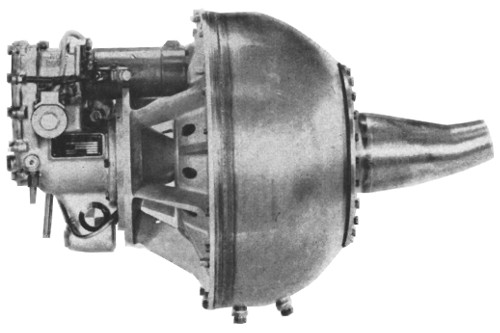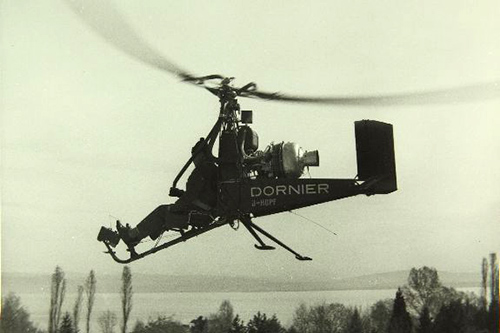
BMW 8025
The BMW 8025 is a small German light turbojet engine developed in the late 1950s by BMW Triebwerkbau GmbH. Derived from an industrial gas turbine, it was briefly adapted for experimental aviation before disappearing without any commercial follow-up. However, this engine represents a significant technical milestone in the history of Minijets.
BMW 8025 Turbojet – The first German light jet engine of the postwar era
The BMW 8025 is a light turbojet engine derived from the industrial gas turbine BMW 6002, introduced in 1959. Manufactured in Munich-Allach, it was the first German jet engine developed for aviation since the end of World War II. Despite its promising performance, it never progressed beyond the experimental stage.
BMW 8025: Background and Engineering
Originating from a civilian project, the BMW 8025 was adapted for aeronautical use without major structural modifications. This compact and reliable engine reflected German ingenuity in the miniaturization of jet propulsion systems, at a time when Minijet projects were emerging.
BMW 8025 – Engine Specifications
The BMW 8025 has an empty weight of 35 kg. Its takeoff thrust is approximately 36 kg. Later, without any changes to the engine’s weight or basic dimensions, the thrust increased to about 42 kg. It is equipped with an electric starter and can operate on various types of fuel. The use of Jet A1 or diesel is recommended for cost and safety reasons. This fuel is also used for lubrication, which eliminates the need for an oil pump, reduces weight, and simplifies maintenance.
Introduction and Early Uses

The BMW 8025 was unveiled to the public at the 1960 Hanover Air Show. It quickly stood out for its performance in the field of small experimental aircraft. It notably powered the motorized glider Allgaier Hütter 30TS, demonstrating an excellent thrust-to-weight ratio for such a compact engine.
A Milestone Engine in Minijet History
Designed during a period of industrial revival, the BMW 8025 paved the way for a new generation of light jet engines intended for drones, jet-powered gliders, and technology demonstrators. Its mechanical simplicity, low weight, and ability to run on common fuels made it an especially attractive solution for independent designers or low-budget projects.
Application
Présentation générale du motoplaneur Hutter H30TS Le motoplaneur Hutter H30 TS se présente sous un aspect assez classique, avec un empennage « papillon » et une voilure à grand allongement et profil laminaire. On peut dire que son histoire démarre en 1954, époque où commençait à peine à s’amorcer le prodigieux essor des plastiques stratifiés. Eugen Hänle était […]
Sources and Notes

BMW 6002
The BMW 6002 was the first gas turbine developed by BMW after World War II. Its development required the establishment of a dedicated R&D organization for gas turbine technology, which was the very first of its kind in postwar Germany. It led to one of the earliest generations of small gas turbines in the world. Another development, the 6012 L3 model—a turboshaft engine—powered the Dornier Do 32 k Kiebitz helicopter, which made its first free flight on July 3, 1962.


